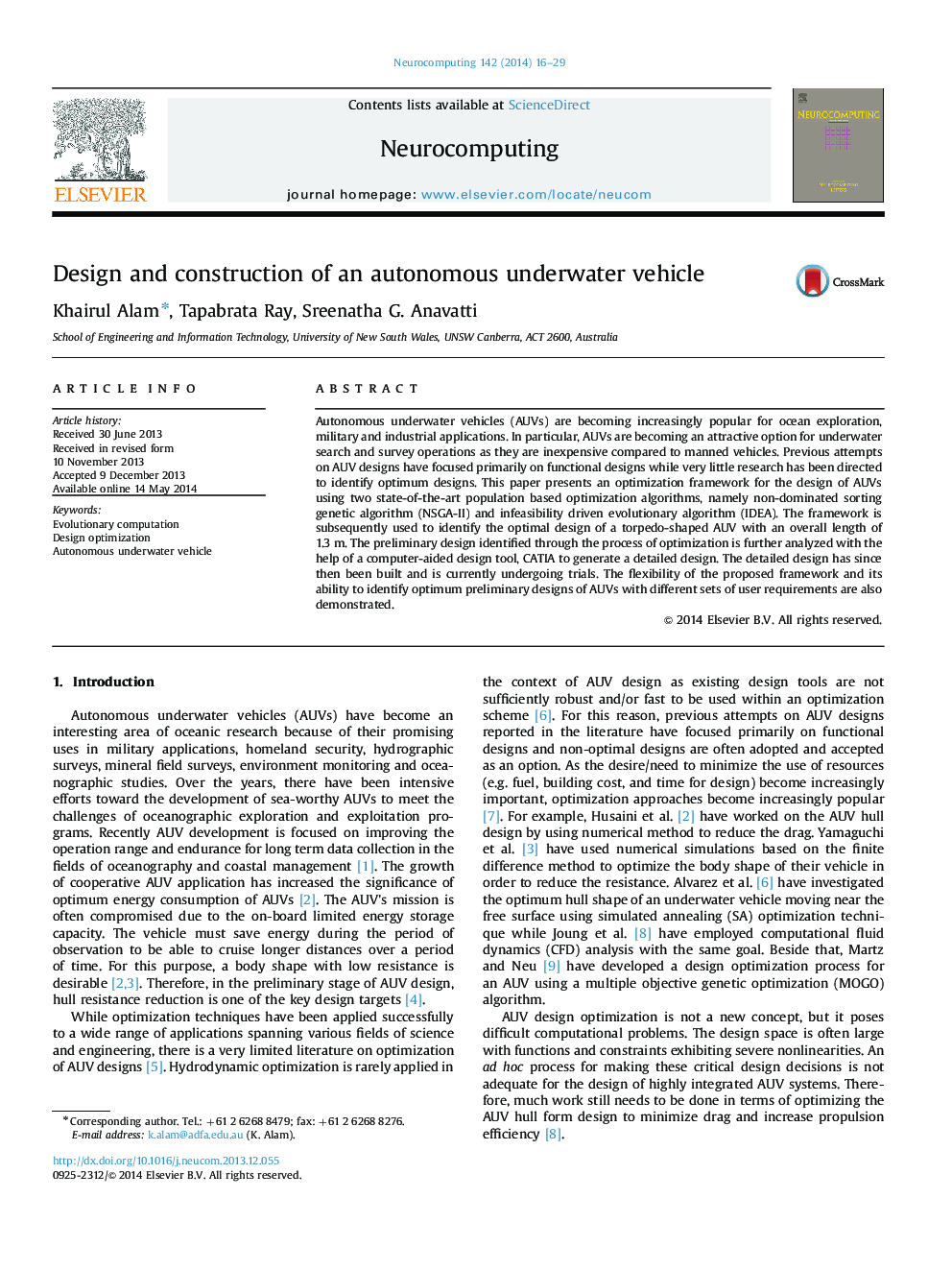| Article ID | Journal | Published Year | Pages | File Type |
|---|---|---|---|---|
| 412256 | Neurocomputing | 2014 | 14 Pages |
Autonomous underwater vehicles (AUVs) are becoming increasingly popular for ocean exploration, military and industrial applications. In particular, AUVs are becoming an attractive option for underwater search and survey operations as they are inexpensive compared to manned vehicles. Previous attempts on AUV designs have focused primarily on functional designs while very little research has been directed to identify optimum designs. This paper presents an optimization framework for the design of AUVs using two state-of-the-art population based optimization algorithms, namely non-dominated sorting genetic algorithm (NSGA-II) and infeasibility driven evolutionary algorithm (IDEA). The framework is subsequently used to identify the optimal design of a torpedo-shaped AUV with an overall length of 1.3 m. The preliminary design identified through the process of optimization is further analyzed with the help of a computer-aided design tool, CATIA to generate a detailed design. The detailed design has since then been built and is currently undergoing trials. The flexibility of the proposed framework and its ability to identify optimum preliminary designs of AUVs with different sets of user requirements are also demonstrated.
